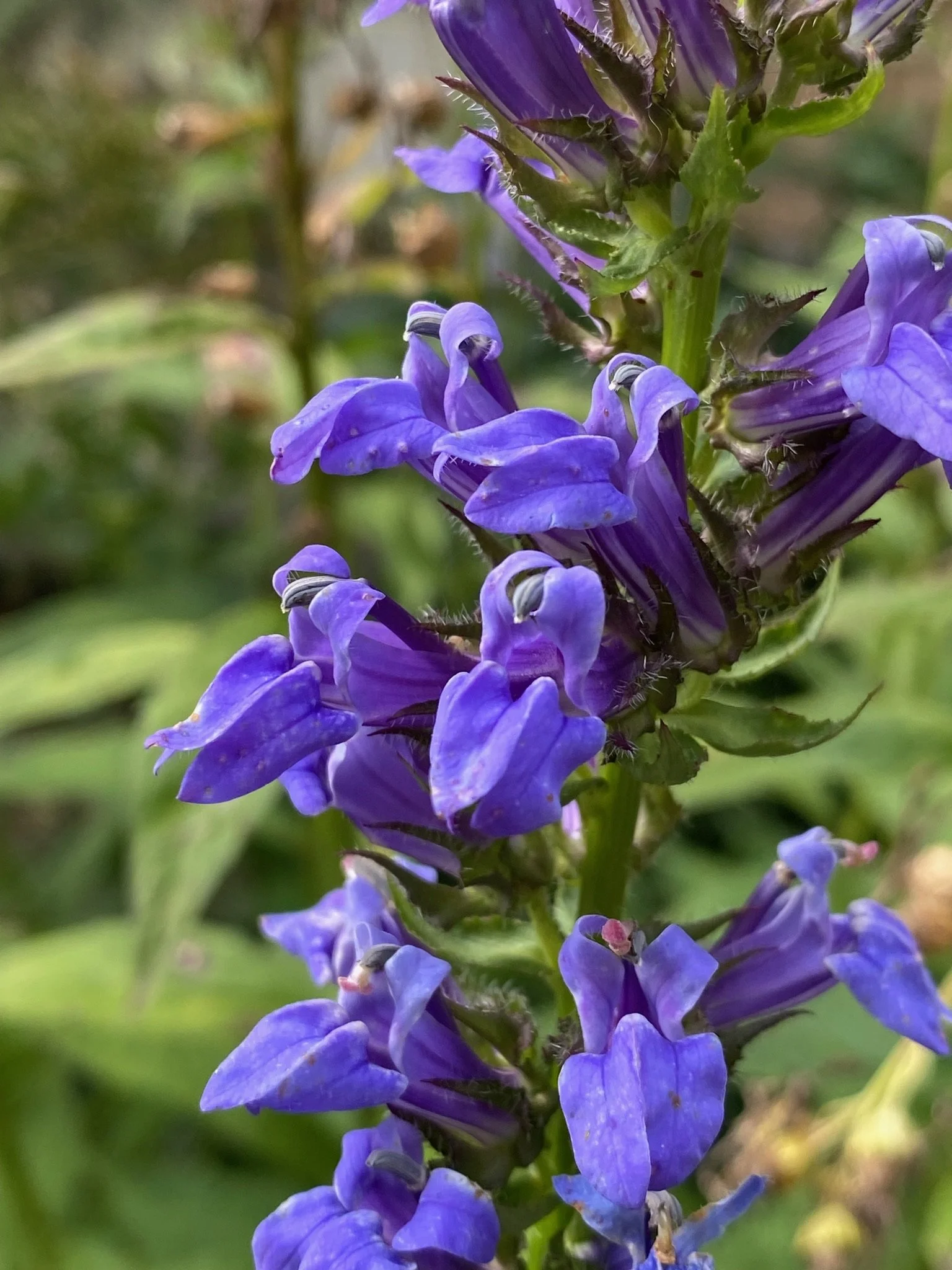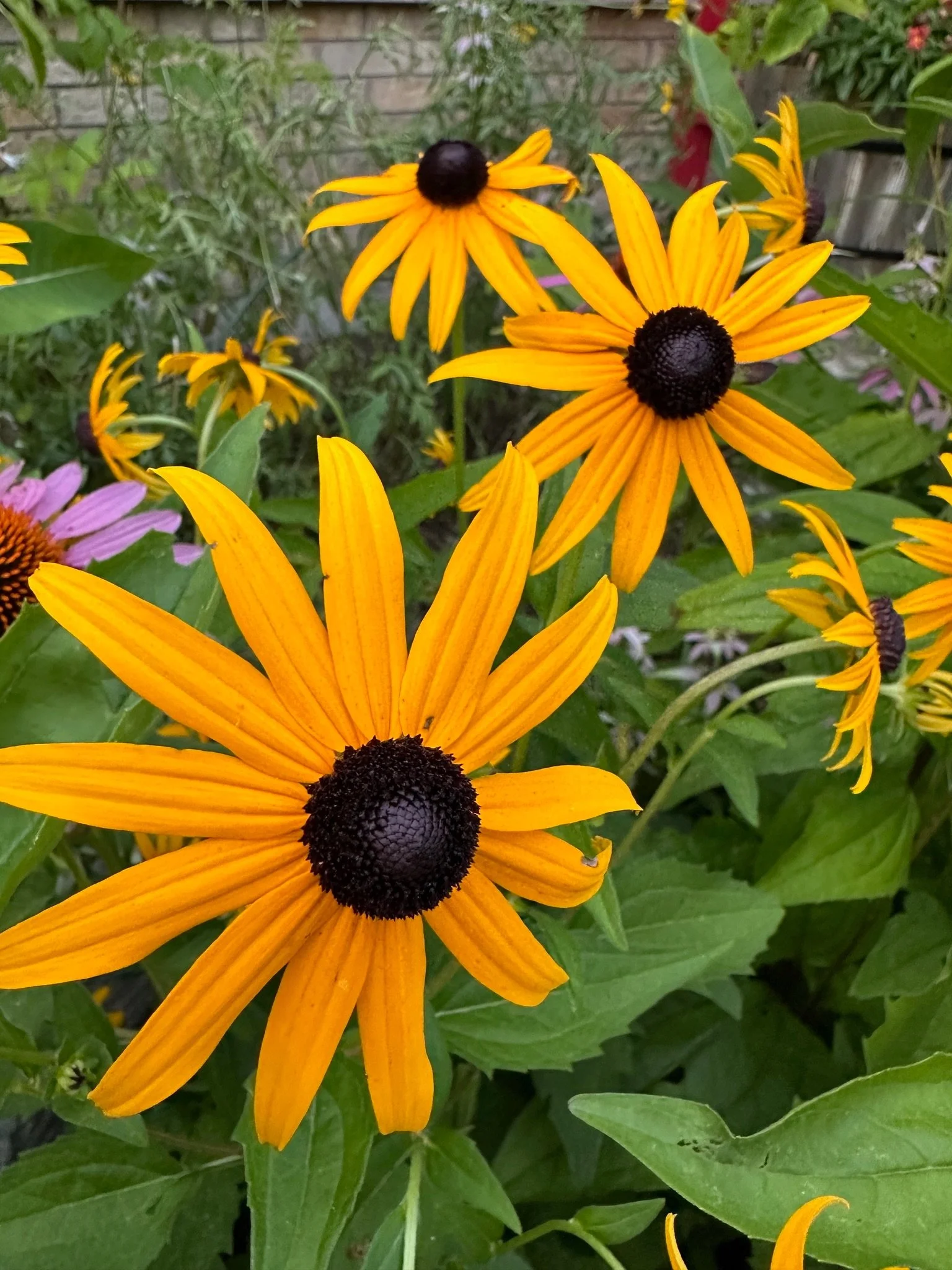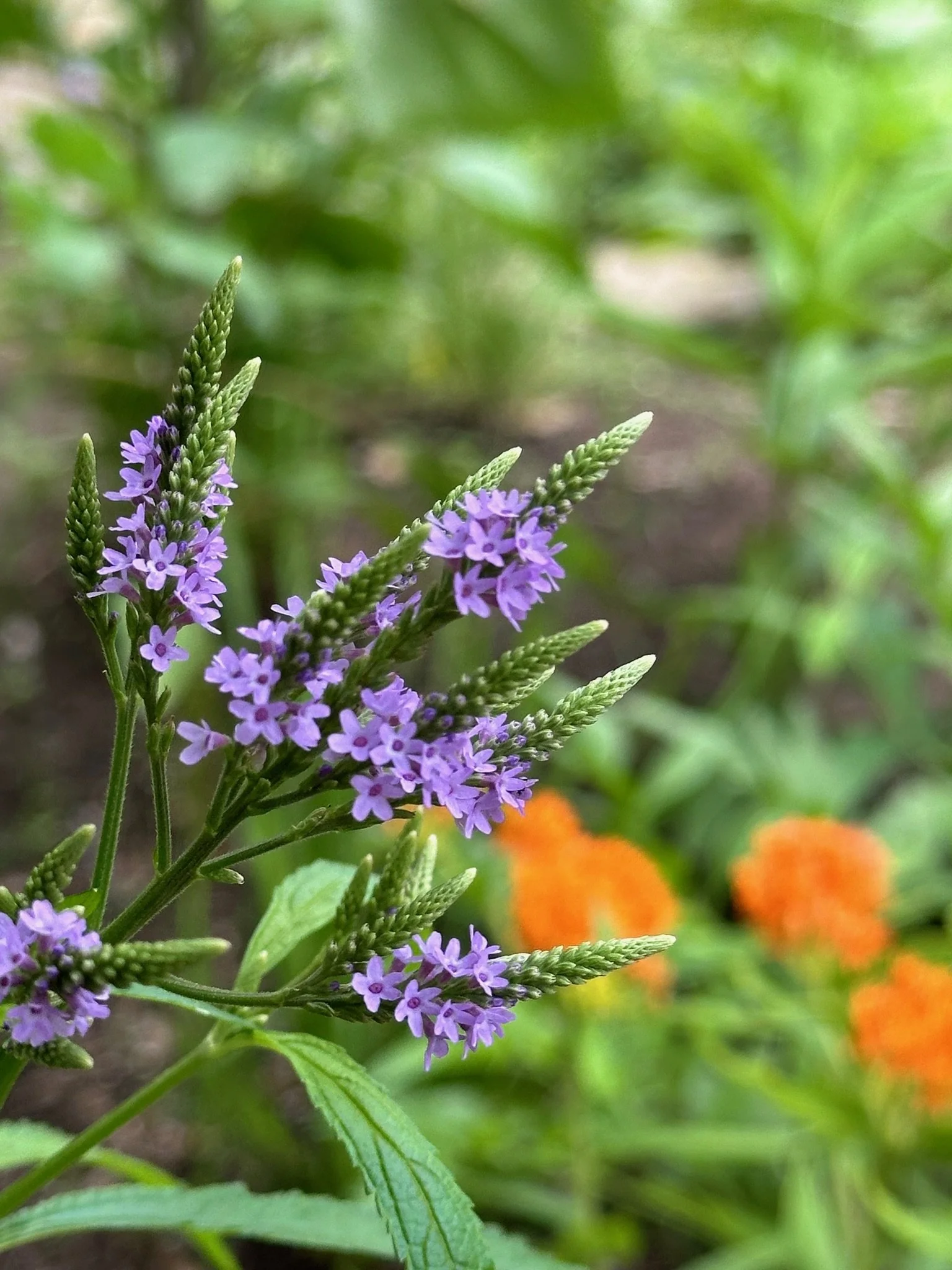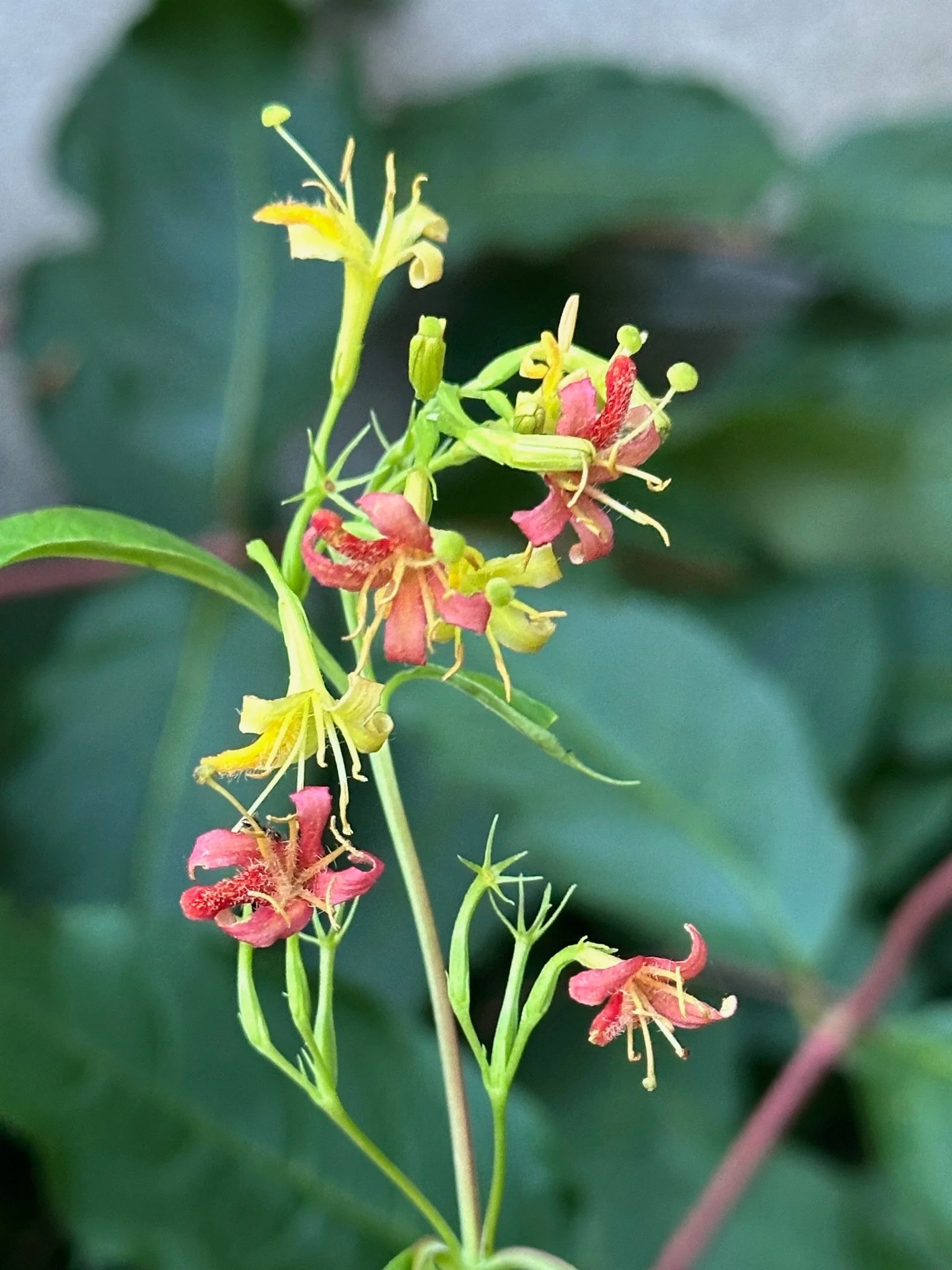Rain Garden
What is a Rain Garden?
A rain garden is more than just a practical landscaping feature—it's a beautiful and eco-friendly way to manage rainwater while enhancing your outdoor space. These specially designed gardens are crafted to capture rainwater and allow it to naturally soak into the ground, helping to reduce runoff and minimize stress on city stormwater systems. Some rain gardens are designed to collect runoff directly from roof downspouts, enabling homeowners to make better use of rainwater right in their own yards. This not only helps conserve water but also reduces the strain on urban drainage systems. Other rain gardens can be the perfect solution for managing yard drainage problems, redirecting excess water to an area specifically designed with the right soil and plants for excellent infiltration. It's important to note that rain gardens aren't meant to hold standing water like a pond or swamp. They are carefully engineered to drain within 24 to 48 hours after a heavy rainstorm, leaving no room for mosquito breeding or unpleasant odours. Depending on your local climate and rainfall patterns, your rain garden may even spend much of its time on the drier side. For this reason, selecting plants that can thrive in both wet and dry conditions is absolutely essential. When done right, a rain garden can transform your yard into a haven for both people and wildlife, adding vibrant colours, textures, and even a bit of habitat for pollinators like bees and butterflies. It’s a practical yet artistic way to turn rainwater into an asset, making it a win-win for your landscape and the environment!
How to create a Rain Garden?
Creating a rain garden requires careful planning and attention to detail to ensure it functions effectively and remains an attractive part of your landscape. Here are some best practices:
1. Choose the Right Location
Place the rain garden in a low-lying area where rainwater naturally collects or where it can intercept runoff from roofs, driveways, or other hard surfaces.
Ensure the site is at least 10 feet away from buildings to prevent water from seeping into foundations.
Avoid areas with a high water table or poor drainage.
2. Analyze Soil and Improve Drainage
Test the soil to check its infiltration rate (how quickly water drains). Sandy soil is ideal, while clay may require amendments.
Consider mixing organic matter into the soil to improve infiltration and plant health.
3. Design the Shape and Depth
Create a shallow depression, typically 4-8 inches deep. The size and depth will depend on the amount of runoff the garden is intended to manage.
Use gentle slopes and curves to blend the garden into the landscape naturally.
4. Select Appropriate Plants
Choose native plants that can tolerate varying moisture conditions, including periods of dryness and occasional flooding.
Incorporate a mix of grasses, flowers, shrubs, and ground cover to add diversity and attract wildlife.
Avoid invasive species that could disrupt the ecosystem.
5. Construct for Effective Function
Dig a berm (a raised edge) on the downhill side to prevent runoff from escaping. (Note: What is a Berm? A berm is essentially a raised barrier or mound of soil, often used in landscaping and water management. In the context of a rain garden, a berm helps to slow down or redirect water, preventing runoff from flowing away too quickly. This is especially useful on slopes, as the berm on the downhill side creates a mini-dam, holding water in the rain garden long enough for it to soak into the ground rather than escaping)
Consider adding layers of gravel or sand beneath the topsoil to improve drainage.
Include a mulch layer to retain moisture and suppress weeds.
6. Manage Maintenance
Regularly weed and prune plants to keep the garden tidy.
Monitor drainage to ensure water is infiltrating properly and adjust as needed.
Replace dead plants and check for erosion after heavy rains.
7. Redirect Water Effectively
Connect downspouts or construct pathways for runoff to flow into the rain garden.
Ensure water flows smoothly into the garden without causing erosion.
If you’re in our region and would like to establish a rain garden, here are some tried-and-true plant recommendations from us:
Full Sun Rain Garden
Flowers
Black Eyed Susan (Rudbeckia hirta)
Blue Eyed Grass (Sisyrinchium montanum) (It’s a member of the iris family, so not a true grass!)
Blue Lobelia (Lobelia siphilitica)
Blue Vervain (Verbena hastata)
Butterfly Milkweed (Asclepias tuberosa)
Cardinal Flower (Lobelia cardinalis)
Dense Blazing Star (Liatris spicata)
Dogtooth Daisy (Helenium autumnale)
Marsh Marigold (Caltha palustris)
New England Aster (Symphyotrichum novae-angliae)
New York Ironweed (Vernonia noveboracensis)
Prairie Smoke (Geum triflorum)
Spotted Joe Pye Weed (Eupatorium maculatum)
Swamp Milkweed (Asclepias incarnata)
Wild Bergamot (Monarda fistulosa)
Grasses
Big Bluestem (Andropogon gerardii)
Little Bluestem (Schizachyrium scoparium)
Pennsylvania Sedge (Carex pensylvanica)
Shrubs
Common Elderberry (Sambucus canadensis)
Nannyberry (Viburnum lentago)
Part Shade Rain Garden:
Flowers
Blue Flag Iris (Iris versicolor)
Blue Lobelia (Lobelia siphilitica)
Canada Anemone (Anemone canadensis)
Cardinal Flower (Lobelia cardinalis)
Northern Bog Violet (Viola nephrophylla)
Spotted Joe Pye Weed (Eupatorium maculatum)
Swamp Milkweed (Asclepias incarnata)
Water Avens (Geum rivale)
Wild Geranium (Geranium maculatum)
Grasses
Canada Wild Rye (Elymus Canadensis)
Morning Star Sedge (Carex grayi)
Shrubs
Eastern Ninebark (Physocarpus opulifolius)
Red-Osier dogwood (Cornus sericea)









